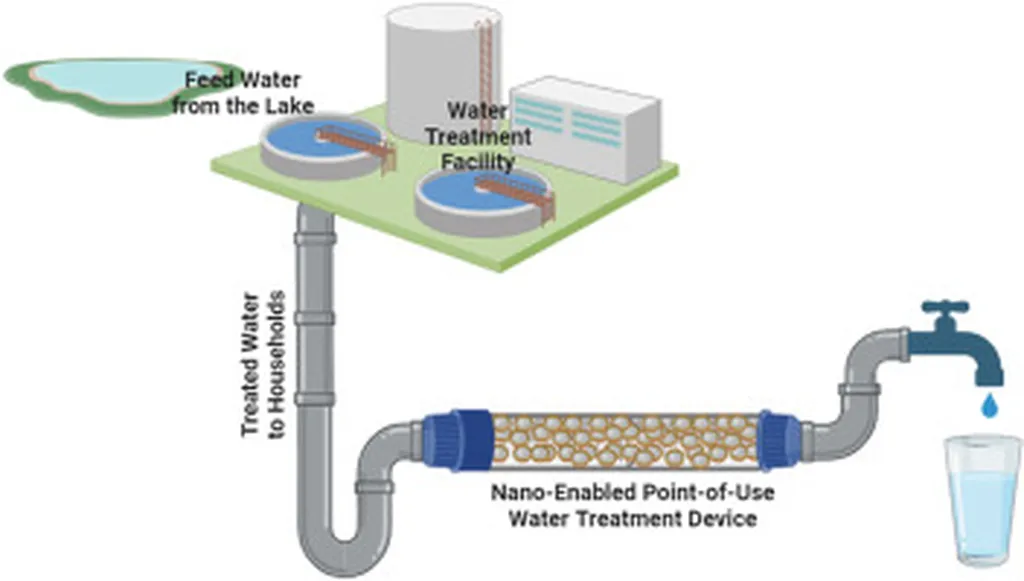In the quest to clean up groundwater contamination, a team of researchers led by Hui Li from the Institute of Hydrogeology and Environmental Geology, Chinese Academy of Geological Sciences, has made a significant stride. Their work, published in the *Journal of Groundwater Science and Engineering* (translated from Chinese), focuses on removing 1,2,3-trichloropropane (TCP), a harmful chemical often found in groundwater due to industrial activities. The team’s innovative approach combines graphene oxide (GO) and nanoscale zero-valent iron (nZVI) to activate persulfate (SPS), a powerful oxidant, to break down TCP more efficiently.
The research team prepared GO, nZVI, and a composite material called GO-nZVI using established methods. They then characterized these materials using advanced techniques like Scanning Electron Microscopy (SEM) and X-ray Diffraction (XRD). The results were promising: the GO-nZVI composite exhibited a porous, fluffy structure with nZVI particles loaded onto the GO sheets, enhancing its ability to activate SPS.
In a series of batch experiments, the team found that the GO-nZVI composite significantly improved the removal efficiency of TCP compared to unmodified nZVI. “The GO-nZVI composite achieved a removal rate of 67.2% within an hour, which is 78.2% higher than the unmodified system,” said Li. This substantial improvement highlights the potential of GO-nZVI in groundwater remediation.
The study also identified key factors influencing the degradation efficiency of TCP. Higher SPS concentrations and an optimal carbon-to-iron ratio in GO-nZVI were found to enhance TCP removal. The team’s one-dimensional simulation further demonstrated that larger medium particle sizes and higher concentrations of reactants improved pollutant degradation efficiency. However, higher groundwater flow velocities hindered the removal process.
The implications of this research for the energy sector are profound. Groundwater contamination is a significant concern for energy companies, particularly those involved in oil and gas extraction, where TCP and similar chemicals can be byproducts. Effective remediation technologies are crucial for maintaining environmental compliance and public trust.
Li’s team has shown that GO-nZVI-activated SPS can be a powerful tool in this regard. “Our findings suggest that GO-nZVI-activated SPS has great potential for in-situ remediation of TCP-contaminated groundwater,” Li explained. This could lead to more efficient and cost-effective cleanup solutions, reducing the environmental impact of energy operations.
As the energy sector continues to evolve, the need for sustainable and environmentally friendly practices becomes ever more critical. This research offers a promising avenue for addressing groundwater contamination, potentially shaping future developments in the field. With further refinement and field testing, GO-nZVI-activated SPS could become a standard tool in the fight against groundwater pollution, benefiting both the environment and the energy industry.

